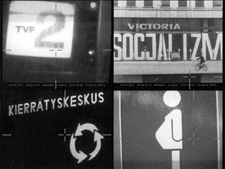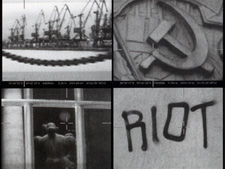Rodrigo
Alonso
“Streets are the dwelling place of the collective. The collective is an eternally restless, eternally moving essence that, among the facades of buildings endures, experiences, learns, and senses as much as individuals in the protection of their four walls. For this collective the shiny enameled store signs are as good and even better a wall decoration as a salon oil painting is for the bourgeoisie. Walls with the “deffense d’afficher” are its writing desks, newspapers are its libraries, letterboxes its bronzes, benches its bedroom furniture...”
Walter Benjamin. Das Passagen-Werk.
 |
|
 |
| Davide Grassi & Mikael Lundberg. AVCom. Installation. 2004. |
 |
Davide Grassi & Mikael Lundberg. AVCom. Installation. 2004. |
 |
Through the figure of the flâneur, Walter Benjamin portrayed one of the key protagonists of modernity. This reader of metropolitan signs, translator of urban experiences and resonance point of the crowd was the witness of a changing world at the dawn of industrialization and the patient teller of city development and mass growth.
As Benjamin’s Baudelaire did with the Paris of the end of XIX century, Davide Grassi and Mikael Lundberg face again the metropolitan landscape. But in this journey, at the beginning of XXI century, local references have burst in uncountable sensorial fragments that in their simultaneous presentation transmit the frantic rhythm of six cities at the crossroads of information flows.
Taking to the extreme the tourist gaze, the artists condense their route along those cities (Copenhagen, Stockholm, Helsinki, St Petersburg, Kaliningrad and Gdansk) in an incongruent superposition of information channels: swift sightseeing, texts dissolved in a sound mass, fragments of media, location data. The cities express through their linguistic and architectural physiognomy, their monuments, their historical chronicles, their ads, their heroes, their economic structures. Big enterprises, cultural clichés and residues of a conflictive past are the indifferent and parody symbols of old State-nations painfully resisting the pounding of globalization.
In the confrontation of local realities with the homogeneous description of information flows there is a conflict between two different scales, one human and the other planetary. The first one unfolds in a dislocation of everyday life, conveyed by partial and changing information, unfinished stories and speedy rhythms. The constancy of habits, the security of well-known places changes into an unstable reality showing the consequences of global politics, migrations and technological transformations. The planetary scale manifests in the GPS data that document the artists’ movements through the cities. Its presence is also paradoxical. As location instrument, GPS data is unable to inform about the local particularities of the visited places. Instead, it appears as an intriguing target that threatens the images, adding a new menace to their precarious nature.
As Baudelaire’s gaze crystallized in memorable poems, Grassi and Lundberg’s do in an ephemeral symphony. Maybe it is an uncomfortable format for art history, but it is the only one capable to give shape to the insistent fleeting of contemporary world.
|
Published in:
AVCom (cat.). Ljubljana: Aksioma: Institute for Contemporary Art, 2004.
|

